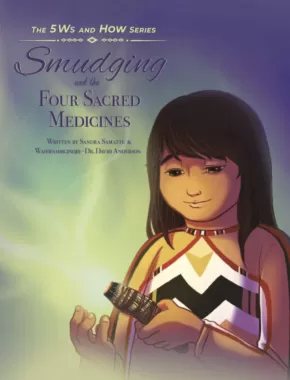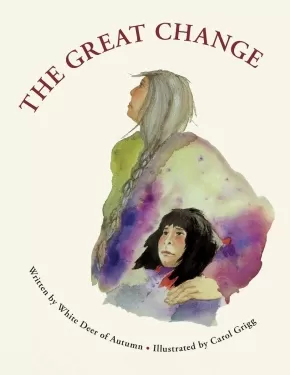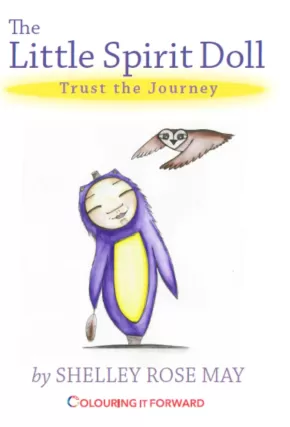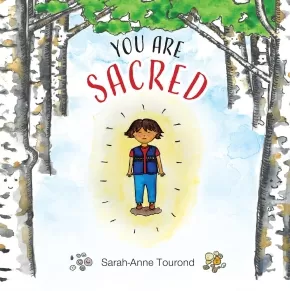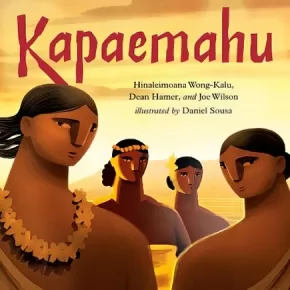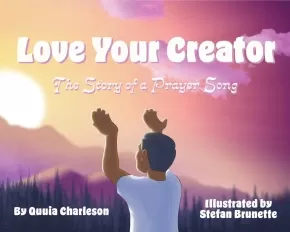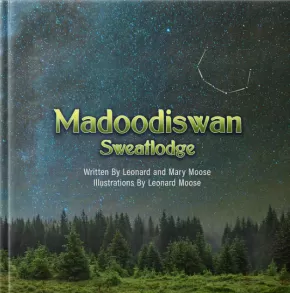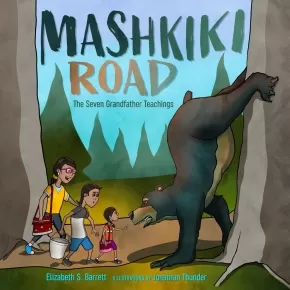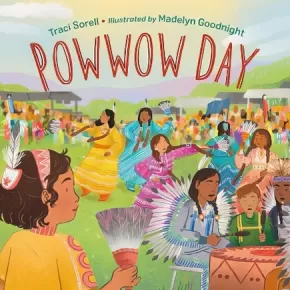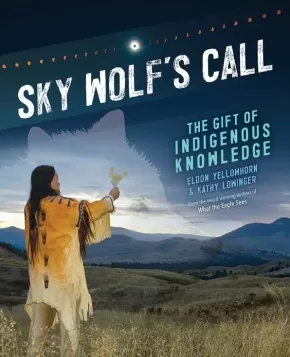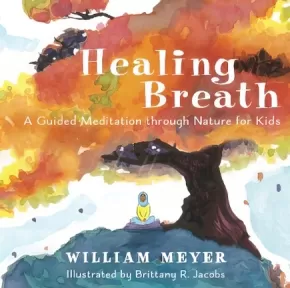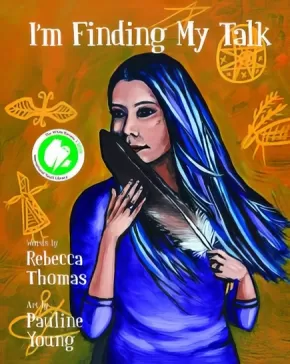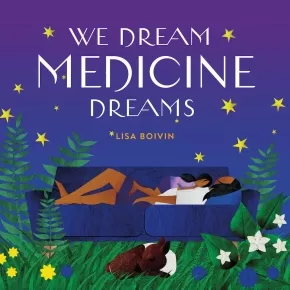
Healing
16
-
30
of
44 Results;
Sort By
Go To
of 3
Smudging and the Four Sacred Medicines
$24.95
Format:
Hardcover
Text Content Territories:
Indigenous Canadian;
ISBN / Barcode: 9781990297557
Synopsis:
Synopsis:
The 5 Ws and How Series has been created to help All of Us learn and understand who we are, as Indigenous Peoples across Turtle Island.
The first book in this series, Smudging and the Four Sacred Medicines, will guide you as you learn about Sacred Medicines and Smudging. Learn how Smudging helps us stay strong and connected to All of Creation. Indigenous Peoples have always Smudged and use Sacred Medicines in Ceremony, for Healing, and in daily life. This book shows which Medicines to use in a Smudge, how to Respect the Spirit of the Medicines when Smudging, and reminds us that Smudging is for Everyone!
Educator & Series Information
Recommended for grades 2 to 5.
This book is part of The 5 Ws and How Series.
Includes information about who, where, how, and when to smudge.
Shares information about the four sacred medicines (tobacco, sweetgrass, sage, cedar).
Additional Information
20 Pages | Hardcover
The Great Change
$14.99
Artists:
Format:
Paperback
Text Content Territories:
Indigenous American; Native American;
ISBN / Barcode: 9781582708928
Synopsis:
Synopsis:
What happens when we die? In this beautifully illustrated Native American tale, a wise grandmother explains their people's understanding of death to her granddaughter as they work together on the land, for which they show an exemplary respect and love.
In this Native American tale, a wise grandmother explains the meaning of death, or the Great Change, to her questioning granddaughter. While going through their daily tasks in the Native way, taking from Mother Earth only what is needed and returning what is not used so as to replenish her, nine-year-old Wanba asks, “Why do fish have to die? Why does anything have to die? Why did Grandpa have to die?” Grandmother explains that just as a caterpillar “dies” only to become a beautiful butterfly, there is no “death” in the Circle of Life—only the Great Change.
This is a story of passing on tradition, culture, and wisdom to the next generation. It is a moving tale for everyone—child and adult—who wonders about what lies beyond this life.
Reviews
A gentle and sensitive story about mortality and the interconnectedness of generations and of life-forms that provides a nondoctrinal, reassuring response to a child's questions about the necessity of death. Grigg's watercolors are spare, with washes of brilliant color (cheering a potentially somber subject) against pure white pages. The characters are not romanticized, but the overall effect is delicate and impressionistic." —Patricia Dooley, University of Washington, Seattle Grades 3–6, School Library Journal
This wistful text, based on a Native American tale, ponders the meaning of life and death—reaching the sensible if daunting conclusion that one is impossible without the other.…Delicate pastel watercolors capture the story's essence on gossamer wings with a pleasing combination of sophistication and childish impressibility. —Publisher's Weekly
Educator Information
Recommended for ages 6 to 12.
Additional Information
32 pages | 8.50" x 11.00" | Paperback
The Little Spirit Doll: Trust the Journey (6 in stock, Out of Print)
$17.00
Artists:
Format:
Paperback
Text Content Territories:
Indigenous Canadian; Métis;
ISBN / Barcode: 23-DF-053-1
Synopsis:
Synopsis:
The little spirit doll is made with clay and wood. The clay was taken without ceremony from her river bank home so the little spirit doll feels traumatized from being ripped from her home and feels that she has no name and no one who loves her. She goes on a journey to heal and with the help of friends and spirit guides, she finds her way.
This 40-page book contains illustrations that are gradually coloured in as the doll heals. It is a great way to teach children about trauma and healing.
Educator Information
Recommended for ages 7 to 10.
Additional Information
40 Pages | 8.5"x 6" | soft cover
You Are Sacred
 $18.95
$18.95

Artists:
Format:
Hardcover
Text Content Territories:
Indigenous Canadian; First Nations; Anishinaabeg;
ISBN / Barcode: 9781771746298
Synopsis:
Synopsis:
Anishinaabe teachings share that all children are Sacred. Still new to this world, they are close to the Spirit world and deeply connected to Mother Earth.
Rooted in this belief, You Are Sacred is a lyrical story that encourages the spiritual wellness of young learners. Each page is a reminder that we are all relations and can find solace in the plants and animals, land and sky, and Ancestors around us. Using the teachings of the Spiritual quadrant of the Anishinaabe Medicine Wheel, this affirmational picture book shares a heartwarming message for children: You are Sacred.
This is the first book in the All That You Are series.
Awards
- 2024-2025 First Nation Communities READ Award Longlisted
- Honourable Mention in the Sunshine Coast Writers and Editors Society Indigenous Voices Book Award
Educator Information
You Are Sacred is a perfect read-aloud for children ages 3 to 6 in both classrooms and homes.
Curriculum Connections:
Early Literacy – listening, reading, and discussing
Art – traditional Anishinaabe clothing and art
Health and Wellness – focusing on breath and balance, self-affirmation
Science – harmonious ecosystems, biodiversity of plants and animals with Indigenous cultural importance, environmental awareness
Social Responsibility – uplifting others and ourselves
Indigenous Knowledge and Traditions – teachings of the Anishinaabe Medicine Wheel, the Seven Generations, and All Our Relations
Series Information
You Are Sacred is the first book in the All That You Are series. Through lyrical text and watercolour illustrations, this series shares the teachings of the Anishinaabe Medicine Wheel to remind children of their connection to the world around them. Each book is inspired by one quadrant of the Medicine Wheel that represents an aspect of wellness—Spiritual, Physical, Emotional, or Mental. A diagram of the Medicine Wheel is included at the back of the books. Anishinaabe Connections are also included to share more about Anishinaabe art, culture, and traditions explored in the text and illustrations.
You Are the Land is the second book in the series.
A percentage of proceeds from the All That You Are series is donated to the Indian Residential School Survivors Society to support their efforts in advocacy for justice and healing. To find out more information, please visit https://www.irsss.ca/.
Additional Information
24 Pages | 8" x 8" | Hardcover | ISBN: 978-1-77174-629-8
I Wish You Were Here
 $16.95
$16.95

Format:
Hardcover
Text Content Territories:
Indigenous Canadian; First Nations; Tsimshian (Ts'msysen); Haida;
ISBN / Barcode: 9781771745727
Synopsis:
Synopsis:
Dear Jean,
I had a substitute teacher recently. He stood up for a girl wearing a cedar hat when she was told to take it off by the vice-principal…
Even though Jean and Michael come from different cultural backgrounds and live far apart, they are best friends. To keep in touch, they write letters. Read their letters to discover what Jean and Michael do when they see and experience racial prejudice in their communities.
I Wish You Were Here is based on the authors' childhood experiences as pen pals in Haida Gwaii and Terrace in northern British Columbia. The book explores themes of friendship, culture, family, and community. It also addresses some tough issues, such as racism and intolerance, and explores ways to respond proactively. Included are resources and discussion questions to encourage further learning and reflection.
Reviews
“This lovely book explores healthy strategies for addressing racism and discrimination, including ceremonies, art, and intercultural allies. It is necessary reading for fostering the reconciliation and Indigenous resurgence that is imperative for our collective growth and enlightenment.” – Terri-Lynn Williams-Davidson, musician, author, activist, artist, and lawyer
“This book helps us to empower our children and each other in the important work of recognizing, talking about, and working through acts of racism.” – Severn Cullis-Suzuki, lifelong activist for intergenerational justice
Educator Information
Recommended for grades 3 to 7.
This middle-grade picture book includes discussion questions, a glossary, and additional resources for further learning and reflection.
Curriculum Connections & Keywords: Reconciliation, Indigenous Education, Social Awareness and Responsibility, Social Studies, Allyship, Racism, Anti-Racism, Discrimination, Social Justice, Racial Injustice, Haida, Haida Gwaii, Gwaii Haanas National Park, Tsimshian, Terrace, Letter Writing, Pen Pals, Friendship, Diversity, Child Empowerment, Advocacy, Inclusivity.
This book provides readers the opportunity to look at racism and discrimination through two different cultural lenses. It's a teaching tool to initiate conversations about issues such as racism, discrimination, and reconciliation.
In the video below, Erica Jean Reid Gidin Jaad shares how to pronounce Haida and Tsimshian words in I Wish You Were Here.
Additional Information
32 Pages | 6.5" x 9.5" | Hardcover | ISBN: 9781771745727
Kapaemahu
$23.99
Artists:
Format:
Hardcover
Text Content Territories:
Indigenous Hawaiian; Indigenous Tahitian;
ISBN / Barcode: 9780593530061
Synopsis:
Synopsis:
An Indigenous story about how four extraordinary individuals of dual male and female spirit, or Mahu, brought healing arts from Tahiti to Hawaii, based on the Academy Award–contending short film.
In the 15th century, four Mahu sail from Tahiti to Hawaii and share their gifts of science and healing with the people of Waikiki. The islanders return this gift with a monument of four boulders in their honor, which the Mahu imbue with healing powers before disappearing.
As time passes, foreigners inhabit the island and the once-sacred stones are forgotten until the 1960s. Though the true story of these stones was not fully recovered, the power of the Mahu still calls out to those who pass by them at Waikiki Beach today.
With illuminating words and stunning illustrations by Hinaleimoana Wong-Kalu, Dean Hamer, Joe Wilson, and Daniel Sousa, Kapaemahu is a monument to an Indigenous Hawaiian legend and a classic in the making.
Additional Information
40 pages | 9.50" x 9.31" | Hardcover
Love Your Creator: The Story of a Prayer Song
$20.95
Artists:
Format:
Paperback
Text Content Territories:
Indigenous Canadian; First Nations; Nuu-chah-nulth (Nootka); Hesquiaht;
ISBN / Barcode: 9781777894726
Synopsis:
Synopsis:
This is the true story behind a song that was once a hymn remembered from residential school. With the help of his family and community, especially the determination of his son, and encouraging words of his Grandmother, Knowledge Keeper Quuia Charleson (Nuu-Chah-Nulth), has reclaimed Love Your Creator and continues to share both the song and its story through oral tradition at events and on travels. Engaging illustrations by Stefan Brunette passionately portray the people and events in this exciting picture book for all ages. Discover the story and learn the strength of a song.
Educator Information
Recommended for ages 5 to 12.
This book is available in French: Aime ton Créateur: L'histoire d'une chanson de prière.
Additional Information
36 pages | 10.00" x 8.00" | Paperback
Madoodiswan: Sweatlodge
$22.99
Artists:
Format:
Paperback
Text Content Territories:
Indigenous Canadian; First Nations; Anishinaabeg;
ISBN / Barcode: 9781990297328
Synopsis:
Synopsis:
Mary and Leonard say our Ancestors passed Adizookaanan, our stories, on for thousands of years, filling the long winter nights with our oral history, philosophy, and ceremonies. Madoodiswaan, Sweatlodge, is the story of the four sisters who spoke to the beavers and in accordance with Creator's Law constructed a Sweat Lodge that would help to heal the Anishinaabeg.
Educator Information
The publisher of this work recommends it for all grade levels.
Additional Information
64 Pages | Paperback
Mashkiki Road: The Seven Grandfather Teachings
$25.00
Format:
Hardcover
Text Content Territories:
Indigenous American; Native American; Anishinaabeg; Ojibwe (Chippewa); Red Lake Nation;
ISBN / Barcode: 9781681342382
Synopsis:
Synopsis:
Three young cousins explore the woods in search of medicines that heal and purify, also gathering advice from wise beings who offer life lessons cherished through generations.
“I’m running low on medicines,” says Grandma Mindy. At once, Lily, Ogimaa, and Ellie are ready to help. Together they will travel Mashkiki Road—the road where the medicines grow—in search of sage and cedar for Grandma.
Not too far into the woods, they encounter Makwa (Bear), who introduces them to the Seven Grandfather Teachings. Makwa advises them to have the courage to do what is right. Farther along the path they meet Sa’be (Bigfoot), who represents honesty, and Mashkode-Bizhiikii (Buffalo), who encourages respect. When the cousins reach a grove of sage plants, they know what to do. They put out tobacco, give thanks, and gather just the amount Grandma needs—no more, no less.
As they continue on Mashkiki Road, they meet Ma’iingan (Wolf), Amik (Beaver), and Mikinaak (Turtle), who each offer their own lessons. At the cedar grove, the children put out tobacco, give thanks, and gather what they need. As they head home at last, Migizi (Eagle) glides by to assure them he has been watching over their journey. Migizi offers the seventh Grandfather Teaching: love.
Back at Grandma’s, Lily, Ogimaa, and Ellie have much treasure to share: cedar and sage from Mashkiki Road, and also tales of the wisdom they gained along the way.
Reviews
"Native teachings are at the center of this beautiful children's picture book by two members of the Red Lake Ojibwe.... Their partnership is a winner. Barrett’s lyrical text is perfectly complemented by Thunder’s contemporary illustrations."- St. Paul Pioneer Press
Educator Information
Recommended for ages 3 to 7.
Includes a Glossary of Ojibwe words used in the story.
Additional Information
32 pages | 10.00" x 10.00" | Hardcover
Powwow Day (HC) (9 in Stock)
$21.99
Artists:
Format:
Hardcover
Text Content Territories:
Indigenous American; Native American;
ISBN / Barcode: 9781580899482
Synopsis:
Synopsis:
In this uplifting, contemporary Native American story, River is recovering from illness and can't dance at the powwow this year. Will she ever dance again?
River wants so badly to dance at powwow day as she does every year. In this uplifting and contemporary picture book perfect for beginning readers, follow River's journey from feeling isolated after an illness to learning the healing power of community.
Additional information explains the history and functions of powwows, which are commonplace across the United States and Canada and are open to both Native Americans and non-Native visitors.
Awards
- 2023 Wyoming Buckaroo Award
Reviews
"A heartwarming picture book about the roles of courage, culture, and community in the journey of personal healing." —Kirkus Reviews
"A resonant, hopeful tale about the healing power of community and tradition" —Publishers Weekly
Educator Information
Recommended for ages 4 to 8.
Additional Information
32 pages | 9.44" x 9.31" | Hardcover
Sky Wolf's Call: The Gift of Indigenous Knowledge
$16.95
Format:
Paperback
Text Content Territories:
Indigenous Canadian; Indigenous American;
ISBN / Barcode: 9781773216294
Synopsis:
Synopsis:
From healing to astronomy to our connection to the natural world, the lessons from Indigenous knowledge inform our learning and practices today.
How do knowledge systems get passed down over generations? Through the knowledge inherited from their Elders and ancestors, Indigenous Peoples throughout North America have observed, practiced, experimented, and interacted with plants, animals, the sky, and the waters over millennia. Knowledge keepers have shared their wisdom with younger people through oral history, stories, ceremonies, and records that took many forms.
In Sky Wolf’s Call, award-winning author team of Eldon Yellowhorn and Kathy Lowinger reveal how Indigenous knowledge comes from centuries of practices, experiences, and ideas gathered by people who have a long history with the natural world. Indigenous knowledge is explored through the use of fire and water, the acquisition of food, the study of astronomy, and healing practices.
Reviews
"An authoritative tribute to Indigenous knowledge systems that's a must-have for every library and classroom." - Kirkus Reviews
“Sky Wolf’s Call has an astoundingly broad scope introducing Indigenous Traditional Ecological Knowledge (TEK) in North America from time immemorial to the current day … This fast paced celebration of Indigenous innovation and technology is riveting.” - The British Columbia Review
Educator Information
Interest Age: 11+
Grade: 6+
Reading Age: 11+
A Junior Library Guild Gold Standard Selection
Table of Contents
Author’s Note
1: Sky Wolf’s Call: The Gift of Indigenous Knowledge: Foundational ideas behind Indigenous Knowledge and the importance of retaining, maintaining, and learning this sacred knowledge.
2: Water Knowledge Ways: Water links us all and is sacred. Indigenous people have fought to protect the gift of water from harm, and the critical role it has played in transportation, agriculture, irrigation, and food.
3: Fire and Smoke Knowledge: Fire and smoke are great gifts, including the burning of tobacco. In sacred ceremonies, smoke connects our breath with the heavens. Fire cooks our food, helps grow our crops, and even keeps our waters clean. Cultural burns are used to benefit the land.
4: Indigenous Knowledge and Food Security: Sharing, growing, and receiving food with family, community, and visitors is both an honour and a tradition. By understanding the traditional practices of salmon fishing, clam gardens, planting and harvesting certain crops, or hunting buffalo, Indigenous Peoples have respected what Mother Earth has to offer.
5: Healing Knowledge Ways: The use of the medicine wheel and the sweat lodge have been used over centuries and still help sick and troubled people. Games such as lacrosse and chunkey have helped in building individual strength and community spirit. And braiding together Indigenous healing and western science has opened new learning opportunities.
6: Sky Knowledge: From the earliest Indigenous astronomers to modern astrophysicists, these sky watchers have studied the sacred gifts of the sky: the sun, moon, planets, and stars that have produced maps, calendars, beliefs about how to govern, and even directions for building homes.
7: Keeping the Knowledge: Indigenous People hold oral narratives in high esteem because that was the way knowledge passed from one generation to the next. People in North America recorded important events with symbols, pictographs (paintings), and petroglyphs (carvings). Language Keepers and Knowledge keepers are making sure that Indigenous knowledge is never forgotten.
8: Sky Wolf’s Call: Indigenous knowledge is based on the idea that this world is a gift. Understanding the idea of connections (the skies with the earth, people with animals, the practical with the spiritual) is an important lesson with the challenges of climate change, pandemics, and wars. The wisdom of Indigenous Knowledge can help the whole world.
Thanks and Acknowledgments
Glossary
Selected Reading
Sources and Contacts
Additional Information
120 pages | 7.50" x 9.25" | Paperback
White Raven (PB)
$12.95
Artists:
Format:
Paperback
Text Content Territories:
Indigenous Canadian; First Nations; Heiltsuk (Bella Bella);
ISBN / Barcode: 9781772033786
Synopsis:
Synopsis:
Little Wolf, grown up with children of her own, moves to the country where her mother, White Raven, shares a sad story from her childhood.
All grown up with a family of her own, Little Wolf moves from the big city to the island of her ancestors. She wants to share the beauty and mysteries of nature with her children, and she wants them to learn as much about their culture as possible. One day, Little Wolf’s mother, White Raven, visits and begins to tell her grandchildren stories from her own childhood. But the stories are not happy ones. As a child, White Raven left her family to attend St. Michael’s Residential School in Alert Bay, BC. While there, she experienced hunger, loneliness, shame, and isolation from her language and her culture. Even years later, as a grown woman and Elder, she has nightmares about her time at the school. But by sharing her story with Little Wolf and her grandchildren, White Raven begins to heal and brings the family closer together. Through simple, heartfelt text and vivid illustrations that combine contemporary and traditional Indigenous motifs, White Raven is an engaging teaching tool as well as a relatable narrative about the impact of intergenerational trauma on families. Based on the author’s own life and her mother’s residential school experience, the central message of this book is one of healing and family unity.
Educator & Series Information
Recommended for ages 4 to 8.
This is the second book in the Little Wolf trilogy.
This book is available in French: Corbeau Blanc
Additional Information
32 pages | 9.00" x 9.00" | Paperback
Healing Breath: A Guided Meditation through Nature for Kids
$26.50
Artists:
Format:
Hardcover
ISBN / Barcode: 9781608687466
Synopsis:
Synopsis:
A gorgeously illustrated guided meditation to calm and soothe as well as inspire and empower us to act on behalf of the natural world.
Join the award-winning team of writer and teacher Bill Meyer and illustrator Brittany R. Jacobs on a guided meditation journey through rich, colorful landscapes spanning the globe. Breathe into the experience of waves on the ocean, trees in a forest, and the warmth of a desert, and feel your connection to all of life, from barnacles to baboons to falcons to farmers. This magical meditation-in-a-book is ideal for anyone who wants to simultaneously calm down and rise up to the world in all its wonders.
Reviews
"This guided meditation begins with a comforting note from the author validating climate anxiety and other concerns. According to this opening text, the purpose of the book is to help readers cope with worry “about the future of our planet,” which will, in turn, “empower” them to take action.... The book’s illustrations are striking and feature characters with diverse skin tones and hair textures, including one dark-skinned child who wears hijab. The words are lyrical and comforting, and the images that the meditation conjures are both kid friendly and relaxing." - Kirkus Reviews
Additional Information
32 pages | 9.00" x 9.00" | Hardcover
I'm Finding My Talk (PB)
$13.95
Artists:
Format:
Paperback
Text Content Territories:
Indigenous Canadian; First Nations; Mi'kmaq;
ISBN / Barcode: 9781774710067
Synopsis:
Synopsis:
I'm finding my talk
And it may take some time,
But I'm learning to speak
In a language that's mine.
A response to Rita Joe's iconic poem "I Lost My Talk," and published simultaneously with the new children's book edition illustrated by Pauline Young, comes a companion picture book by award-winning spoken-word artist and Mi'kmaw activist Rebecca Thomas. A second-generation residential school survivor, Thomas writes this response poem openly and honestly, reflecting on the process of working through the destructive effects of colonialism.
From sewing regalia to dancing at powow to learning traditional language, I'm Finding My Talk is about rediscovering her community, and finding culture. Features stunning, vibrant illustrations by Mi'kmaw artist Pauline Young.
Reviews
"Published as a companion to the picture book I Lost My Talk, featuring the famous poem by Rita Joe, both volumes explore the legacy of Canada’s residential schools. They feature vibrant illustrations by Pauline Young that bring the words alive with emotional nuance. This remarkable pair of books possesses the rare ability of being suited to readers of all ages: three to six-year-olds, the traditional intended audience of picture books, will be captivated by the bright, lively illustrations; elementary and middle school children will find their Social Studies curriculum enriched by experiencing these important concepts rendered creatively; teens and adults will gain insight and empathy by enjoying these beautiful poems." - CM Reviews
"[A]n honest reflection on the process of working through the destructive effects of colonialism by participating in cultural connections. This book offers the opportunity to show the journey one takes when rediscovering their community and culture." - The Dalai Lama Center
Educator Information
Recommended for ages 4 to 9.
Recommended in the Canadian Indigenous Books for Schools 2020/2021 resource list for grades 1-3 in the areas of Social Studies and Language Arts.
Former Halifax Poet Laureate and second-generation residential school survivor Rebecca Thomas writes honestly and powerfully in this companion piece to Rita Joe's I Lost My Talk. Includes vibrant illustrations from Mi'kmaw artist Pauline Young.
Additional Information
32 pages | 8.00" x 10.00"
We Dream Medicine Dreams
$21.95
Artists:
Format:
Hardcover
Text Content Territories:
Indigenous Canadian; First Nations; Dene;
ISBN / Barcode: 9781553799870
Synopsis:
Synopsis:
From Dene artist and bioethicist Lisa Boivin comes this healing story of hope, dreams, and the special bond between grandfather and granddaughter.
When a little girl dreams about a bear, her grandfather explains how we connect with the knowledge of our ancestors through dreams. Bear, Hawk, Caribou, and Wolf all have teachings to share to help us live a good life. But when Grampa gets sick and falls into a coma, the little girl must lean on his teachings as she learns to say goodbye.
Masterful prose and stunning collage weave a gentle story about life and death that will touch the hearts of children and adults alike.
Awards
- 2022 Co-winner of the First Nation Communities READ PMC Indigenous Literature Award, Children’s Category winner
Reviews
"How we deal with loss, and the personal, cultural, and community ways we do that, is an urgent issue. Lisa Boivin's work is as soulful and compelling as it is beautiful!— Dr. Allison Crawford
"In We Dream Medicine Dreams, Lisa Boivin uses her powerful words and pictures to show us natural laws and teachings. These teachings about the medicine power of dreams, family, loss, and connection resonate with Indigenous and non-Indigenous people. In sharing these teachings with us, Lisa has given all those that read her book a great gift that allows the ancestors to speak with our children. This little book full of stories and teachings, which are the core of who we are, will bring us back to our ancestral selves. I encourage everyone, young and old, to spend an evening with this charming masterpiece – you will not regret it." — The Honourable Yvonne Boyer, J.D., L.L.M., L.L.D.
“I highly recommend this book. Not only did I love the incredible illustrations, which would definitely appeal to children, I also loved how this gentle story would be a great starting point when talking to children in a classroom about family loss, death and grief.” — ETFO Voice
Educator Information
Recommended for ages 5 - 8.
Author Lisa Biovin’s background as a bioethicist makes her ideally placed to discuss the subject in a way that’s sensitive and also provide both healing and hope.
The bright colours and textured feel will appeal to children.
Additional Information
48 pages | 9.00" x 9.00"
Sort By
Go To
of 3

